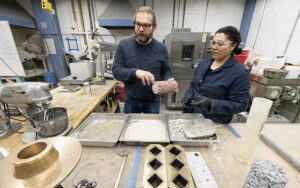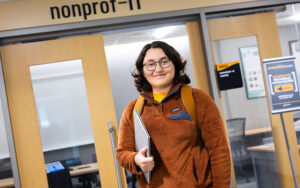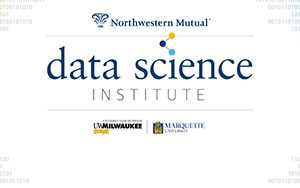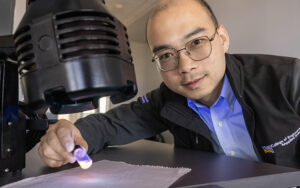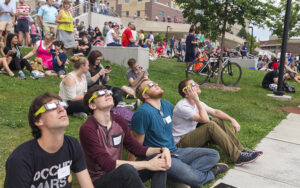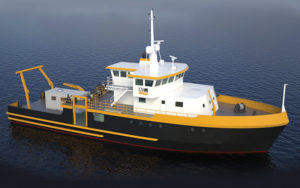Science & Technology
Northwestern Mutual Data Science Institute: The promise of corporate-academic partnerships
In 2018, three influential local organizations – Northwestern Mutual, Marquette and UWM – united to form NMDSI with a shared focus on the ever-evolving and dynamic domains of data science and AI.
The bridge collapse that inspired a civil engineering career for UWM’s Habib Tabatabai
When a cargo ship struck the Francis Scott Key bridge in Baltimore in March, causing it to collapse, it was a case of déjà vu for Habib Tabatabai, faculty member in the UWM’s College of Engineering & Applied Science.
UWM leads new NSF-funded consortium to research greener, high-performance concrete
A grant from the National Science Foundation will establish a center to help create new technologies to improve concrete’s sustainability, durability and labor efficiency, while also bringing down its cost.
Love of tech and desire to help draw student to nonprof-IT
Lauren Rodriguez is pursuing her bachelor’s degree in information science & technology because she wanted to expand how she used computer technology.
NMDSI features UWM professor in new thought leadership program
Edward Levitas, a UWM professor of organizations and strategic management, is the first subject of a new thought leadership program launched by the Northwestern Mutual Data Science Institute, a partnership that includes UWM.
Northwestern Mutual Data Science Institute features AI discussion at annual symposium at UWM
The daylong event will address the evolving landscape of artificial intelligence and how AI will bridge innovation and impact.
UWM engineer helps create sensors of foodborne bacteria using quantum dots
Qingsu Cheng, assistant professor of biomedical engineering, is part of a team developing low-cost biosensors that can quickly identify foodborne bacteria using the fluorescence of quantum dots for detection.
Planetarium hosting eclipse event, teaching 4,300 MPS students this spring
On Monday, the UWM planetarium will host a viewing party. And all this semester, it will host third-graders to learn about space and the solar system.
$1.3 million gift moves UWM closer to new research vessel
The Kohler Trust for Clean Water has given the UWM Foundation $1.3 million toward construction of the Maggi Sue. This gift brings the university within $3.5 million of its goal of $20 million needed to begin the construction process.
NMDSI awards over $600,000 to experts at UWM and Marquette
The Northwestern Mutual Data Science Institute has awarded $675,000 to researchers at its university partners, UW-Milwaukee and Marquette University.


